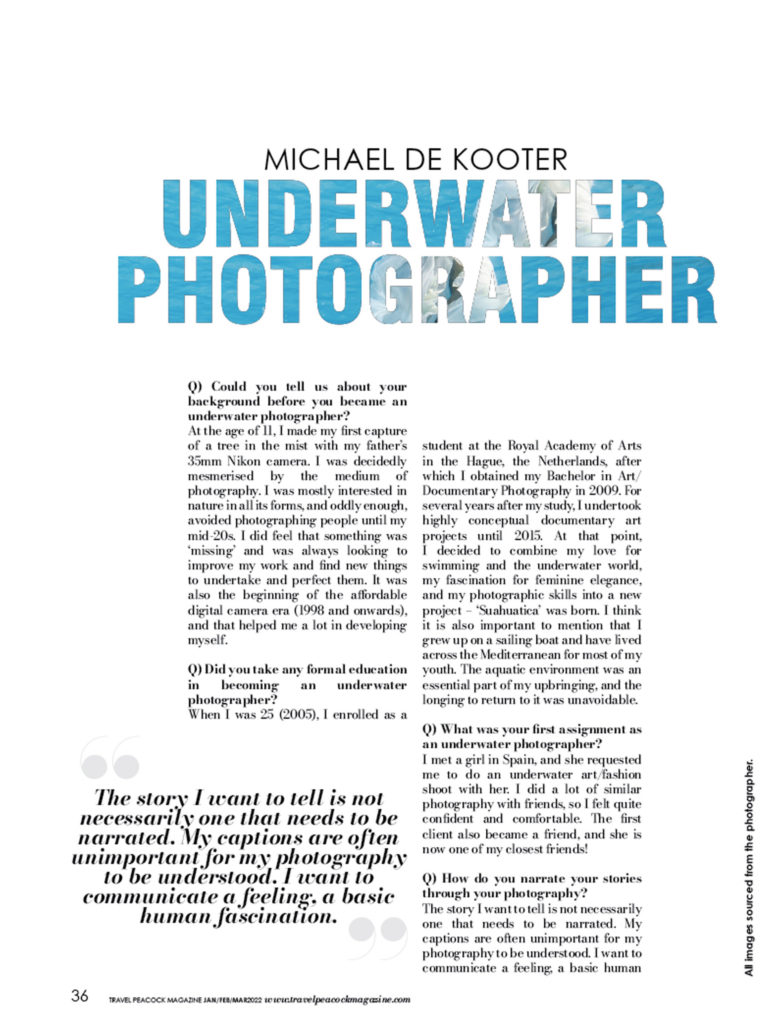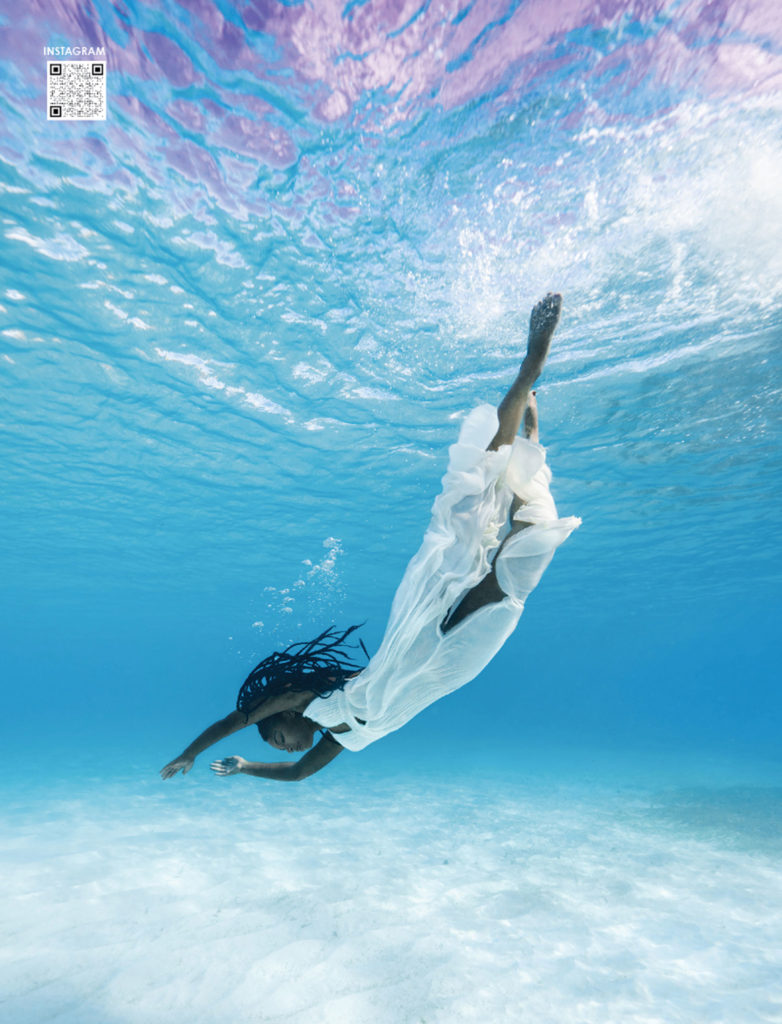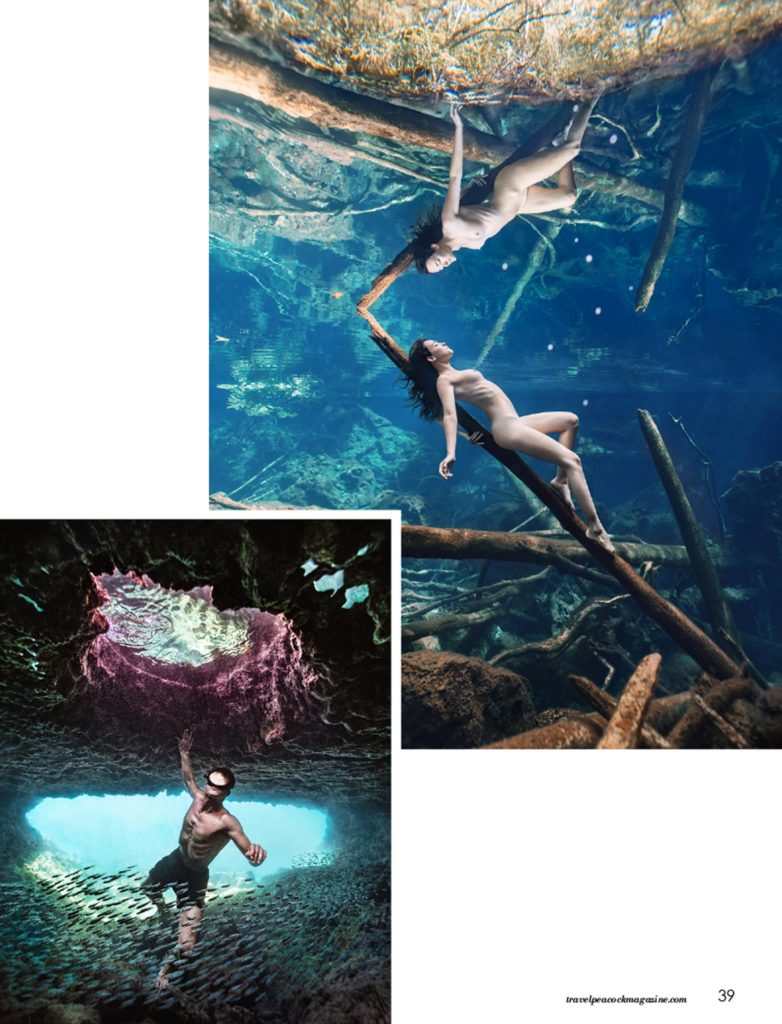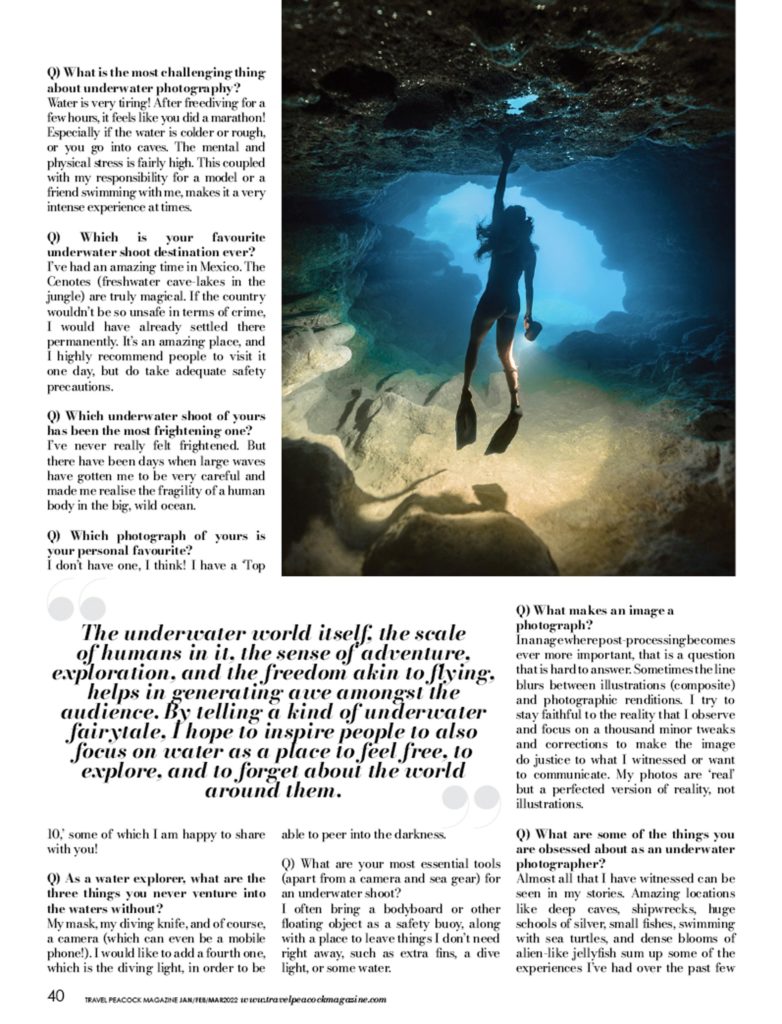
[Q] Could you tell us about your background before you became an underwater photographer?
At the age of 11, I made my first capture of a tree in the mist with my father’s 35mm Nikon camera. I was decidedly mesmerised by the medium of photography. I was mostly interested in nature in all its forms, and oddly enough, avoided photographing people until my mid-20s. I did feel that something was ‘missing’ and was always looking to improve my work and find new things to undertake and perfect them. It was also the beginning of the affordable digital camera era (1998 and onwards), and that helped me a lot in developing myself.
[Q] Did you take any formal education in becoming an underwater photographer?
When I was 25 (2005), I enrolled as a student at the Royal Academy of Arts in the Hague, the Netherlands, after which I obtained my Bachelor in Art/Documentary Photography in 2009. For several years after my study, I undertook highly conceptual documentary art projects until 2015. At that point, I decided to combine my love for swimming and the underwater world, my fascination for feminine elegance, and my photographic skills into a new project — ‘Suahuatica’ was born. I think it is also important to mention that I grew up on a sailing boat and have lived across the Mediterranean for most of my youth. The aquatic environment was an essential part of my upbringing, and the longing to return to it was unavoidable.
[Q] What was your first assignment as an underwater photographer?
I met a girl in Spain, and she requested me to do an underwater art/fashion shoot with her. I did a lot of similar photography with friends, so I felt quite confident and comfortable. The first client also became a friend, and she is now one of my closest friends!
[Q] How do you narrate your stories through your photography?
The story I want to tell is not necessarily one that needs to be narrated. My captions are often unimportant for my photography to be understood. I want to communicate a feeling, a basic human fascination. The feminine form in the underwater world is one that draws a lot of attention, both from the male and female gaze. The underwater world itself, the scale of humans in it, the sense of adventure, exploration, and the freedom akin to flying, helps in generating awe amongst the audience. By telling a kind of underwater fairytale, I hope to inspire people to also focus on water as a place to feel free, to explore, and to forget about the world around them. Not only that, but I particularly want to empower women by portraying them in a kind of sci-fi/superhero-eque way. I love introducing women to freediving and making them better at it. It boosts their self-confidence, gives them a new passion in life and positively sharpens their minds and energy in everyday life.

[Q] What is your process of getting prepared before any shoot?
I eat a small breakfast, try to get my seven hours of sleep, and then dive in! Most of my routine during the shoot is keeping safe as safety first. After a shoot, my regime is to dry the equipment, nourishment, a short afternoon nap, editing photos, and preparing everything for the next day.
[Q] Where/in whom do you find your muse?
It depends. If it is for commercial work, muses find me. (laughs) My Instagram is a powerful marketing tool, and generally, people tend to wait until I go to a location near them. If not, then they fly to me. For my collaborations and more private artistic work, I tend to contact people whom I see diving, or I find them online (Instagram, etc.). Sometimes, they are my friends or my girlfriend, if I have one.
[Q] What sets your mood for photographing?
Clear waters. I love it, and it makes me feel comfortable and confident. I can and do shoot in murkier conditions successfully, but somehow I don’t feel as much in love with the water in those moments. It doesn’t seem to affect the results at all, however, until the water becomes very murky. So that is a feeling I have gotten used to ignoring.

[Q] Which has been your most favourite underwater shoot or assignment?
I worked for Ianos Watches in Greece, on a stunning island called Symi. I shot a video for them that showed the thousand-year-old tradition of sponge diving with a heavy stone weight. It was very fascinating to see freediving in its original and pure form.
[Q] Is there any particular pattern that you follow while shooting underwater?
The only pattern I try to follow is safety first. Other than that, I love to respond to how the person ‘feels’ around me and go with the flow. Of course, I do direct my models/clients to get into certain desirable poses so that I can find ways to show the human form but I do try to stay original and keep developing myself underwater to stay ahead of the competition.
[Q] What is the most challenging thing about underwater photography?
Water is very tiring! After freediving for a few hours, it feels like you did a marathon! Especially if the water is colder or rough, or you go into caves. The mental and physical stress is fairly high. This coupled with my responsibility for a model or a friend swimming with me, makes it a very intense experience at times.
[Q] Which is your favourite underwater shoot destination ever?
I’ve had an amazing time in Mexico. The Cenotes (freshwater cave-lakes in the jungle) are truly magical. If the country wouldn’t be so unsafe in terms of crime, I would have already settled there permanently. It’s an amazing place, and I highly recommend people to visit it one day, but do take adequate safety precautions.
[Q] Which underwater shoot of yours has been the most frightening one?
I’ve never really felt frightened. But there have been days when large waves have gotten me to be very careful and made me realise the fragility of a human body in the big, wild ocean.

[Q] Which photograph of yours is your personal favourite?
I don’t have one, I think! I have a ‘Top 10,’ some of which I am happy to share with you!
[Q] As a water explorer, what are the three things you never venture into the waters without?
My mask, my diving knife, and of course, a camera (which can even be a mobile phone!). I would like to add a fourth one, which is the diving light, in order to be able to peer into the darkness.
[Q] What are your most essential tools (apart from a camera and sea gear) for an underwater shoot?
I often bring a bodyboard or other floating object as a safety buoy, along with a place to leave things I don’t need right away, such as extra fins, a dive light, or some water.
[Q] What makes an image a photograph?
In an age where post-processing becomes ever more important, that is a question that is hard to answer. Sometimes the line blurs between illustrations (composite) and photographic renditions. I try to stay faithful to the reality that I observe and focus on a thousand minor tweaks and corrections to make the image do justice to what I witnessed or want to communicate. My photos are ‘real’ but a perfected version of reality, not illustrations.
[Q] What are some of the things you are obsessed about as an underwater photographer?
Almost all that I have witnessed can be seen in my stories. Amazing locations like deep caves, shipwrecks, huge schools of silver, small fishes, swimming with sea turtles, and dense blooms of alien-like jellyfish sum up some of the experiences I’ve had over the past few years. I am very grateful to have been able to capture them.

[Q] Who are your favourite photographers? Why?
Within the underwater community, I don’t have any specific name. However, there are many individual photos that I often find interesting. If it comes to photographers, I tend to be very impressed by the work of the masters of street art photography. I love Trent Parke’s work, especially for its stark lighting and the beautiful captures that freeze time. I also am a great fan of Antoine d’Agata and his work. Both have influenced me a lot, although part of my inspiration comes from ’80s sci-fi artwork and paintings from the Romanticism era, for example, Wanderer above the Sea of Fog by Caspar David Friedrich.
[Q] What is the first thing you notice when you see other underwater photographers’ work?
I generally appreciate other people’s views on the underwater world a lot. But I also see many imperfections at the same time, such as the correction of colours, the contrast, the pose, or the composition that could have been improved. Ultimately, I am one of the few formally-educated underwater photographers in the world. It means I have four years of training and formation that has predisposed me to a large amount of knowledge that other photographers, who would generally need decades of self-training to master. Other photographers can be more talented, or have better models, or even have better gear but I am fairly confident that in a similar position, I will make a better photo. I think that you need that self-confidence as a photographer to be able to keep competing with, pun intended, a sea of competing work.

[Q] What advice would you give to budding underwater photographers?
Find a different career! (laughs) It took me four years of studying, six years of backbreaking work, and many years of investing without getting any return to get to the point where I can sustain myself well. I became an underwater photographer because I felt a strong desire to show something to the world, not because I wanted to make money or do something that seemed romantic. (I didn’t see it as romantic or interesting at all. it was only later that I realised other people saw it that way.) Photograph what you are good at and interested in and keep it a hobby for as long as you can. Because the day it becomes work, it can, and it will consume you. I have found a balance now, but I still dream of the days when I just had some fun with friends, and there were no deadlines, no pressure, no clients — I just wanted to be happy. I enjoy what I do tremendously, but it’s because it is what I’ve been preparing for all my life.
[Q] What are your future plans?
I would like to keep improving my photography and video work, showcase it to larger international audiences, and spark the love for the underwater world in new countries and communities. I am especially keen on raising awareness of freediving and the underwater world as a place to explore in several countries, India being one of them. Later this year, I will work closely with the current Indian national champion, Selina Samanta. Hopefully, if COVID-19 permits, we will be able to swim together in spring or early summer!

 Add to favorites
Add to favorites
